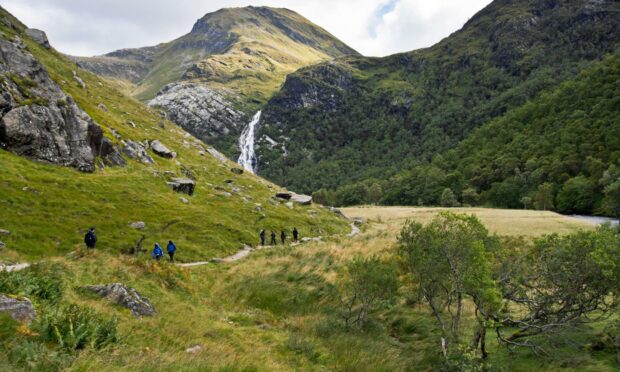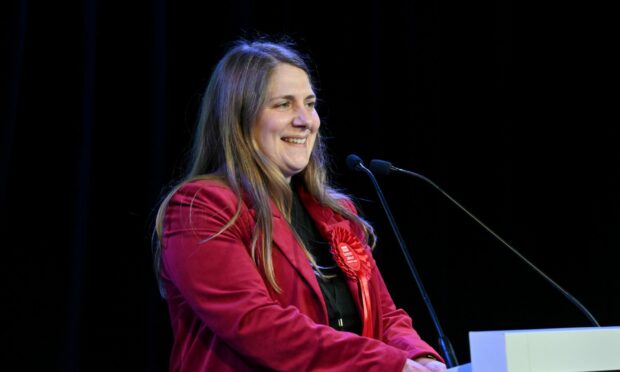A Dundee-based Labour MSP wants to curb how much land Scotland’s super-rich with huge rural estates can own.
Mercedes Villalba unveiled her blueprint at a conference on Friday.
But critics of her proposals insisted large estate owners contribute to the rural economy and warned a cap on owning land could hurt farmers.
It comes as the Scottish Government announced its own plans for land reform will be revealed later in the year.
How does it work?
Under Ms Villalba’s plans, nobody would be allowed to purchase, sell, or own more than 500 hectares of land.
One hectare is equivalent to 10,000 square metres, which measures as a square with 100 metres on each side.
If you prefer the football comparison, 500 hectares is at least 300 pitches.
If Ms Villalba’s land reform plans succeed, a public interest test would be triggered whenever anyone tries to go above the cap.
Rural communities would also be given the option to buy-out large estates from their existing owners.
Similar approaches have been followed on rural Scottish islands such as Eigg and Rum, which are now both run by locals.
SNP rural affairs chief Mairi Gougeon said her party is committed to land reform in Scotland.
She said the government is keen to discuss its own proposals with Ms Villalba.
Ms Gougeon said: “It is imperative that we balance the land rights and responsibilities of landowners, communities and the wider public.
“I welcome Mercedes Villalba signalling her support for further action on land reform and would of course be happy to discuss her ideas once these have been developed and published.”
It comes as the government published its findings following a consultation on what rural residents reckon needs to be done.
Analysis found there was support for upping the responsibilities of large landowners and a majority were in favour of potentially taking estates into community ownership if key requirements are met.
Ms Gougeon added: “In government we must do more to strengthen the contribution that large scale land holdings make to the public interest, improve transparency of land ownership and empower local communities.
“The respondents to this consultation agree with that view, and a majority agree with many of our ambitious proposals for land reform – including the introduction of a public interest test for transfers of large-scale landholdings.”
How is land divided in Scotland?
At the moment it’s estimated just 432 rich Scots hold half of all privately owned rural land north of the border.
The SNP previously revealed there are more than 500 registered titles in Scotland with more than 2,000 hectares each.
Ms Villalba claimed her land reform bill will stop the country’s wealthiest individuals from “hoarding land”.
It’s outrageous that one of the greatest symbols of inequality in Scotland has been unaddressed for so long.
– Mercedes Villalba
She said: “The extraordinarily high concentration of so much land in the hands of so few, is the foundation of the inequality that has blighted Scotland for centuries.
“The super-rich are hoarding land that should be run by community representatives and co-operatives for the benefit of everyone.
“It’s outrageous that one of the greatest symbols of inequality in Scotland has been unaddressed for so long.”
But Scottish Land and Estates, a body which represents rural Scotland, insisted her plans would “damage” communities.
Chief executive Sarah-Jane Laing said: “Land owners of all types are investing heavily in rural Scotland for the benefit of people, jobs and nature.
“Landowners have engaged constructively over proposals on land reform. It is difficult to do so with these proposals which are riddled with inaccuracies and which would damage our ability to produce food and fuel.
“The proposed limit of 500 hectares would affect many family owned farms. Ms Villalba does not seem to grasp this.”
What happens next?
Ms Villalba set out her plans on Friday at a community land charity event and her bill is will formally introduced to Holyrood next Wednesday.
A 12-week consultation is then set to take place as key stakeholders are asked for their views on the proposals.
The Scottish Government has said they want to make land ownership fairer.
Last April, a new register was introduced allowing members of the public to find out who makes key decisions over land use in their areas.
But Ms Villalba has branded their action plan “timid”.




Conversation